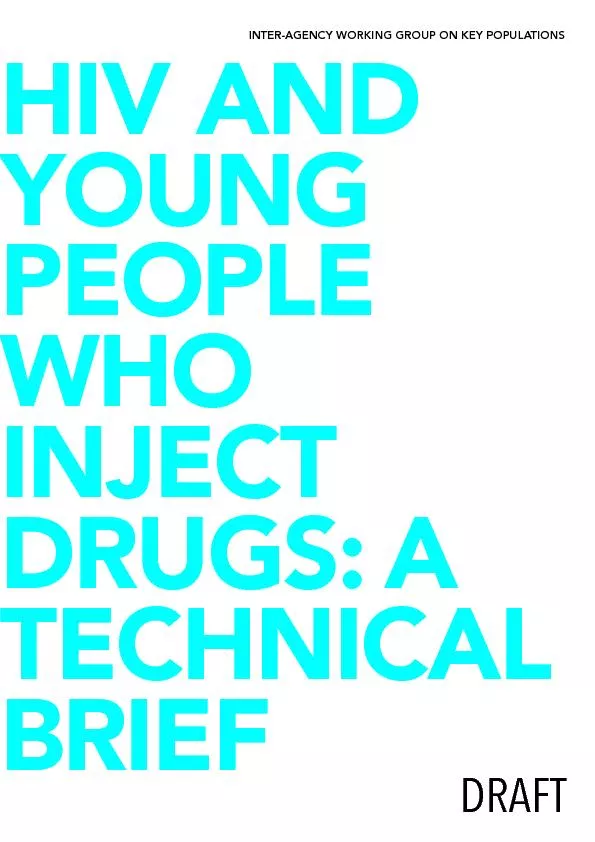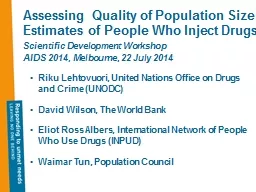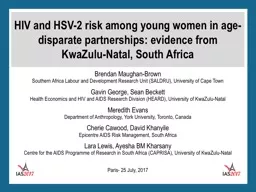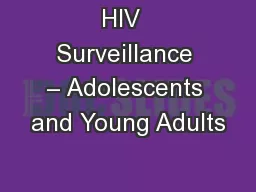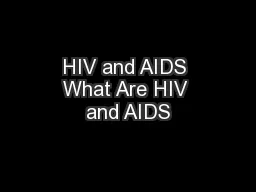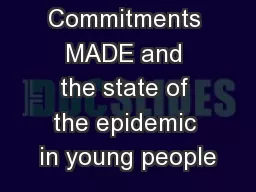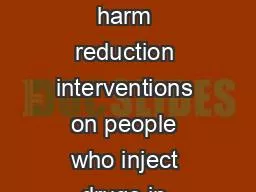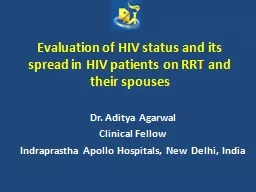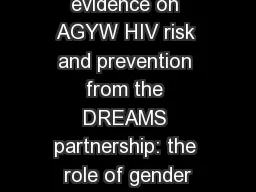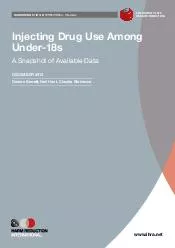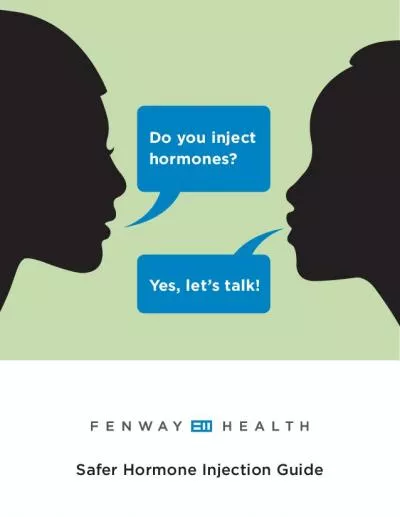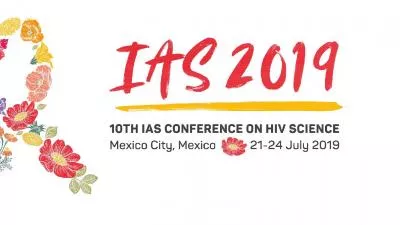PDF-HIV AND YOUNG PEOPLE WHO INJECT
Author : ellena-manuel | Published Date : 2016-04-28
A TECHNICAL INTERAGENCY WORKING GROUP ON KEY POPULATIONS These technical briefs have been developed by the InterAgency Working Group on Key Populations However the
Presentation Embed Code
Download Presentation
Download Presentation The PPT/PDF document "HIV AND YOUNG PEOPLE WHO INJECT" is the property of its rightful owner. Permission is granted to download and print the materials on this website for personal, non-commercial use only, and to display it on your personal computer provided you do not modify the materials and that you retain all copyright notices contained in the materials. By downloading content from our website, you accept the terms of this agreement.
HIV AND YOUNG PEOPLE WHO INJECT: Transcript
A TECHNICAL INTERAGENCY WORKING GROUP ON KEY POPULATIONS These technical briefs have been developed by the InterAgency Working Group on Key Populations However the views expressed do not necess. A TECHNICAL INTER-AGENCY WORKING GROUP ON KEY POPULATIONS These technical briefs have been developed by the Inter-Agency Working Group on Key Populations. However, the views expressed do not necess Scientific Development Workshop. AIDS 2014, Melbourne, 22 July 2014. Riku. . Lehtovuori. , United Nations Office on Drugs and Crime (UNODC). David Wilson, The World Bank. Eliot Ross Albers, International Network of People Who Use Drugs (INPUD). KwaZulu-Natal, South Africa. Brendan Maughan-Brown. Southern Africa . Labour. and Development Research Unit (SALDRU), University of Cape Town. Gavin George, Sean Beckett. Health Economics and HIV and AIDS Research Division (HEARD), University of KwaZulu-Natal. Division of HIV/AIDS Prevention. Diagnoses of HIV Infection among . Adolescents and Young Adults Aged 13. –. 24 years, by Race/Ethnicity, 2010–2015—United . States and 6 Dependent Areas. Note. AIDS- Acquired . I. mmune . D. eficiency Syndrome, is a serious viral disease that destroys the body’s immune . system. HIV-The virus (Human Immunodeficiency Virus) that causes AIDS.. Of the 40,000 new HIV infections each year, half of those occur in people younger than 25 years old. Then…. Millennium Declaration 2000 – leaders commit to a collective . responsibility to ensure equitable . development for . all people, especially children and the most . vulnerable.. MDG 6: Halt . 2019 Statewide Medical & Health Exercise (SWMHE) in Ventura County Controller / Evaluator Training SAFETY Controller / Evaluator should work closely with Safety Officer The Safety Officer monitors exercise activities and advises the Exercise Lead on all matters relating to incident health and safety of all exercise participants. The Safety Officer has emergency authority to stop and/or prevent hazardous actions during operations. Javier . Cepeda. UC San Diego. Background to the modelling. Modelling exercises were undertaken to assess the effect of various approaches to improve integration of HIV and non-HIV-related services on HIV and other noncommunicable disease (NCD) outcomes. Dr. . Aditya. . Agarwal. Clinical Fellow. Indraprastha. Apollo Hospitals, New Delhi, India. Introduction. Human . immunodeficiency virus (HIV) infection has become a global . pandemic.. According to recent UN report,. Julie Pulerwitz, ScD and Sanyukta Mathur, DrPH MHS . Girl uninterrupted: Evidence, implementation and agency. 24 July 2018. No conflicts of interest to disclose. Context. Should address the context in which AGYW live, to improve health & development outcomes. Under-18s A Snapshot of Available Dataarrett Neil Hunt Claudia Stoicescuarrett Neil Hunt Claudia Stoicescueduction Internationaleduction Internationalwwwihraneteduction International international non HIV1 and slower to progress to AIDS.. Most cases are due to type1.. Modes of transmission. 1-sexual.. 2- perinatal.. 3-parenteral(occupational and intravenous drug injection).. 4- blood transfusion.. Safer Hormone Injection Guide Do you inject hormones? Never Share Equipment What Are the Risks? If you are Injecting your own hormones, It Is Important to know what’s safe and what’s not. Keshab Deuba . Save the Children stationed at National Centre for AIDS and STD Control, Kathmandu, Nepal. @Deuba4k. Share your thoughts on this presentation with . #IAS2019. Objectives and Methods. S.
Download Document
Here is the link to download the presentation.
"HIV AND YOUNG PEOPLE WHO INJECT"The content belongs to its owner. You may download and print it for personal use, without modification, and keep all copyright notices. By downloading, you agree to these terms.
Related Documents

